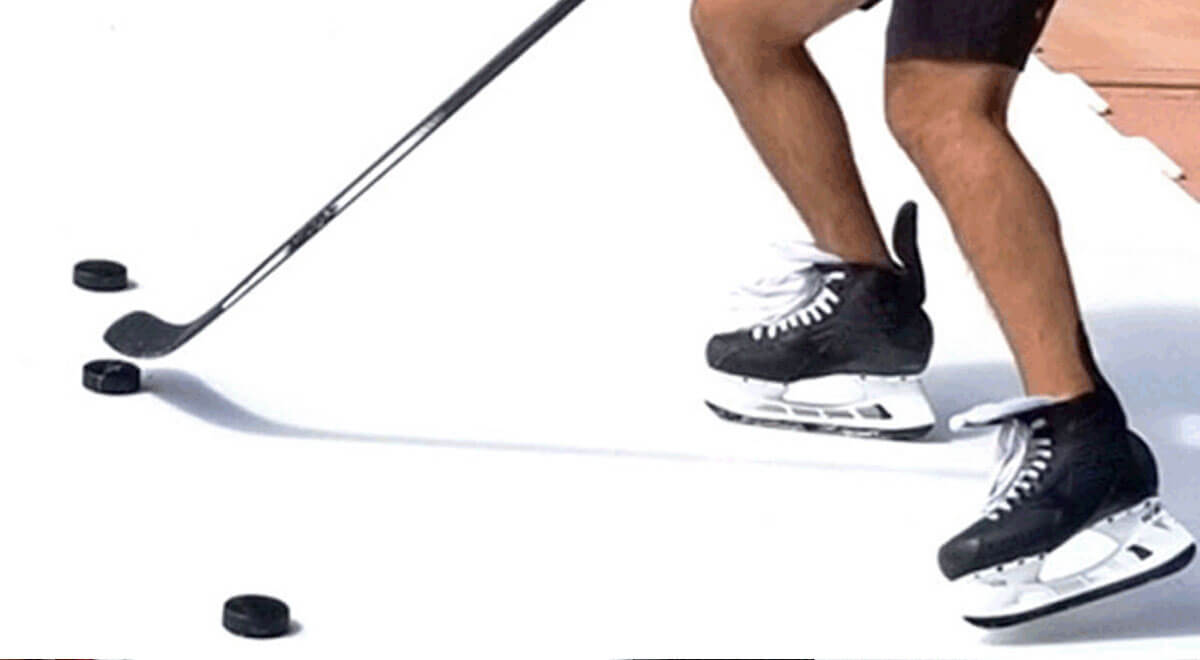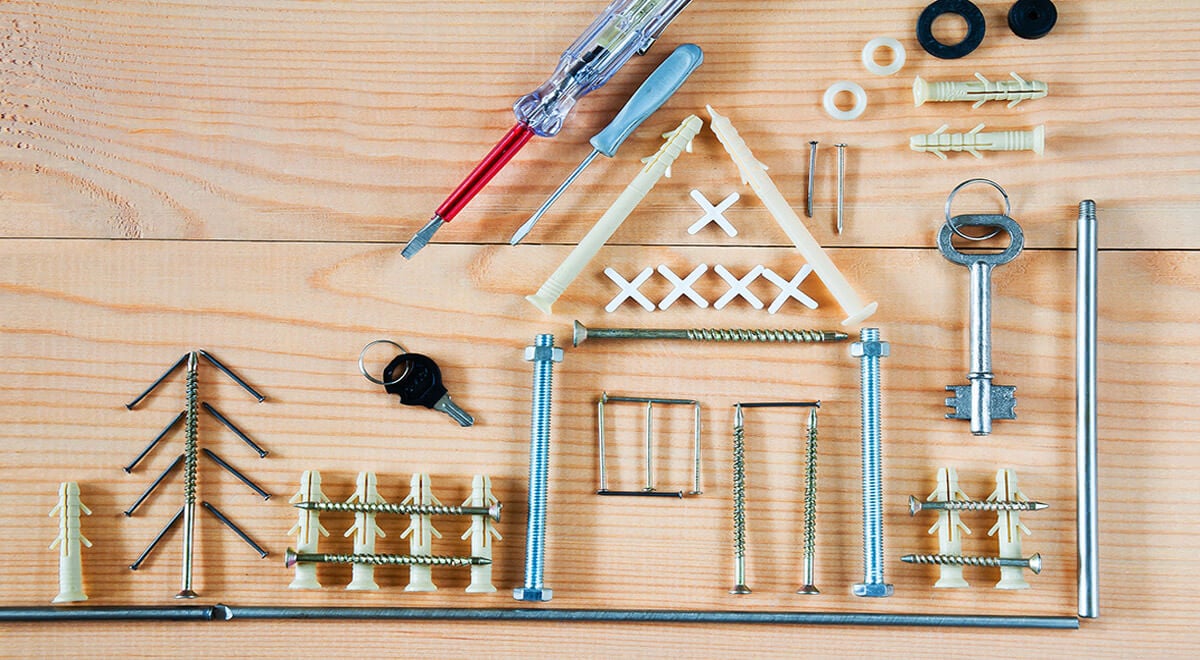Hockey on Synthetic Ice: A Foolproof Guide
Home Hockey Training
Hockey on synthetic ice offers the ideal home ice advanatge for any elite player.
The sport may not get it’s due like many of the other mainstream sports.
But according to Statista, More than 5 million Americans picked up the sport in the last 10 years.
That means kids and teens are still picking up the sport, raring to learn and to become great players.
Of course, they’re going to need all the training they can get.
Even adults and full professionals need to train.
That’s why hockey on synthetic ice has been so important to the hockey industry.
A little back story
I’ve been a lover of hockey for decades.
It’s this love for the game that made me try to replicate it when I was not by the rink.
I’m not talking about a tennis ball and roller blades in a cul-de-sac.
That’s an amazing experience in itself.
But I’m talking about a real (or as close to real) hockey experience.
One with actual ice skates and a puck.
For years, our company has been providing that experience.
This guide will help you set up and play hockey on synthetic ice, the way it was meant to be played.

What is synthetic ice?
Synthetic ice is made of durable sheets of polyethylene panels that emulate the slick, skating feeling of ice skating.
These panels can be cut to fit a particular space.
Others are available in a standard size for a small strip or space in the home.
Once set up, you can use your actual ice skates on the surface, giving you a sweet skating experience.
With these artificial panels, you don’t need expensive cooling equipment and maintenance.
They’re portable, long-lasting, and, most of all, fun!
Why set up synthetic ice?
Now we can hear the gears turning in your head.
You can use synthetic ice tiles for your favorite pastimes like ice skating, and even curling.
But we’re all here for a hockey setup.
When it comes to hockey, a synthetic ice setup will be best for the following reasons:
- You want to get your kids into the sport: If you have kids who’ve expressed interest in hockey, this is a great opportunity to get them and keep them in the sport.
- You need to fuel the fire: You may have some budding mites or squirts in your house that you want to help improve their skills - or burn off some extra energy.
- For professional development: Are you a budding professional or high-performance athlete that needs their own space? A synthetic ice space allows training all through the year, without the added cost of a full ice setup.
- No access to facilities: With the recent COVID-19 pandemic, you don’t see yourself or your kids heading to the city rink or an ODR in the near future. So you need a space that’s not only accessible but safe.
With one or more of these reasons in mind, it’s time to get your first set of synthetic ice panels.

What to look for in your synthetic ice
Before making that purchase it’s best to be clear on a few things:
- Who’s it for?: Think about how many persons would be using the ice panels. Would you have neighbors over? Is it just for your professional training? This will determine the number of panels you will need. It would suck if you need to get more panels because there are more users than expected.
- How will it be used? : Is it for fun games in the afternoon? Or will it be for simple drills to improve speed, strength, or dexterity? This will determine the quality of artificial ice acquired. A high-density option that’s going to stay in a fixed space will work well for heavy use.
- Where will it be installed?: Speaking of fixed space, it’s a good idea to earmark space for your hockey on synthetic ice. Will it be a garage, basement, or backyard? This will determine if you need additional equipment for walls or lubrication.
With those particulars checked off, make sure to ask your provider about the panels themselves.
1 - Coefficient of Friction
The Coefficient of Friction is a good starting point.
Friction determines the gliding ability as it opposes motion.
Therefore if the coefficient of friction in your ice rink is low, then you will have a higher gliding power.
2 - Ask about the materials
Some material, like our infused Pro-Glide panels, work best for longterm, intense use.
Make sure to choose the right material based on your needs.
More importantly, make sure that every part of your panel contributes to a healthy, happy environment.
Find out if the company uses environmentally friendly material and production practices.
3 - Set up and connection
Look for a company that’s willing to work with you for setup.
Once you give them the dimensions of your space, they should be able to tell you exactly what you need to fill the space.
Consider getting larger, custom panels for larger spaces.
This means there will be fewer seams made where the two panels connect.
Panels should seamlessly link and feel as smooth as possible.

Time to install
With panels in hand, you can now set up for space for hockey.
Before slapping together your artificial ice, make sure to check the space thoroughly.
You’d want an even surface to get a great hockey experience.
Clear any debris from the area before installation.
More importantly, the ground must be flat, so that skating is smooth.
This also minimizes the chances of injury.
If the subsurface is not flat, an underlayment or plywood subfloor is vital.
This will help the artificial ice tiles lay better, keep level, reduce moisture and sound.
Once you install the subfloor, place the panels down in order, making sure each connects snugly.
In an enclosed space like a garage or basement, leave some space between the walls.
Flooring of any material tends to expand in hotter months.
Slap on those skates!
We could assume at the same time that you were buying the panels, you had some skates ready!
Conventional skates can be used on your new rink.
Note that the skates may need to be sharpened more than on natural ice.
However, the panels become broken in and more responsive with continued use.
So this will reduce the number of sharpenings in the longterm.
Will this feel different from natural ice?
Without a doubt, natural ice has a kind of gliding effect that has been a challenge to match.
However, the manufacturers of the synthetic ice industry have started implementing specific infused surfaces that are getting them closer to the feeling of skating.
There will be some resistance, however, many hockey players find the resistance helps build strength and speed for the real ice.
With that said, choose some of the best skates on the market.
It’s better to make an investment in skates that will help you crush the competition!
You could try several skates such as:
- CCM Jet Speed Skates
- Bauer Vapor 2X Pro
- Bauer Nexus
- Bauer Supreme 1S and 2S
- CCM Super Tacks
Don’t forget the rest of the equipment

Of course, we will need some more equipment to make our hockey on synthetic ice at home dreams a reality.
Chances are you would have some of these pieces of equipment already but just in case:
- Hockey Stick: Make sure to get more than one stick, if possible, for yourself or your hockey-playing family.
- Puck a.k.a your Biscuit: A plastic or rubber training biscuit helps you get faster, and silkier with the stick. More importantly, it can save broken windows and noses!
- Goals: Pick up two lightweight, standard goals for some intense games! If there’s a goalie in the house, this can help with shot-stopping skills and flexibility. While you’re at it, some shooting targets can help with accuracy!
- Training Equipment: While you can use simple household items in place of cones, pick up some agility cones or other equipment to help with speed and change of direction.
- Safety!: While it’s easy to go play without safety in mind, hockey at home can lead to injuries. Of course, it brings out the competitive nature of all involved! Make sure to get a helmet, elbow, and knee pads for protection, if you’re playing with others.

Time to play!
Now it’s time to get some good use out of your space!
If you’re playing with friends, or your little mites are raring to go, “friendly” games are a great way to start.
Set a target - like the first to 5 goals - and start playing! Take some time to get accustomed to the ice.
To make things more exciting, you can have penalty shootouts, giving each other the chance to practice some sweet goalie skills.
Practice Drills
Practice makes permanent.
Most high-performance athletes get artificial rinks installed in their homes to hone specific skills.
While it’s fun to keep playing games and penalty shootouts for the intense competition, getting some drills in can help you and your budding players.
These simple drills below would get stronger, faster, and more intelligent in the sport.
1. Cutting
Learn how to navigate tight spaces with a simple cutting drill.
First, get five small cones or items and label them A to E. Put A and E a fair distance apart.
Cone B and D should be placed the same distance from A and E and should be closer to each other.
Now, place cone C even closer to B and D.
Begin from cone A towards B while dribbling. Cut to C, then reduce your speed and pull your ball around D.
Dribble to E and finish at A. Record the time spent.
2. Pop and Burst
Let cone A and E be 15ft from each other.
Let C be 30 ft away from the duo.
Place cone B and D at 12 ft from A and E.
Let B and D have three cones each.
Start at A, dribble to B. using elimination skill, pass through the cones, and sprint to C.
Head for D and pass through the funnels using elimination skill again. Finish at the E point.
Don't forget to record your time!
3. Lateral Movement Drills
Mount cone A, B, and D 15 ft away from each other.
Place C and E 9 ft from B. Begin at A.
Head for B and double pull to C and then to B. Burst forward around D and double pull again at B.
Dribble back to A to finish. Record your time.
Maintaining your artificial ice
Cleaning and maintenance is the key to the long health of your hockey space.
Skating on synthetic ice cause abrasions, dirt, and shavings.
Shavings are a natural part of skating on the panels.
Use a soft brush to clean shavings and a wet mop or cloth to clear dirt.
Artificial ice panels last several years, going well past the warranty date.
Conclusion
Hockey on synthetic ice is fun and can shape a hockey skill or career for years.
It’s a great alternative for those with little access to facilities, training, and even playing time.
Setup is a simple process as long as there is some planning beforehand.
Before starting, have a clear idea of the space and purpose of the ice.
This can help you save time and money.
Get home-friendly equipment like hockey sticks, pucks, and goals.
These will ensure you get the best performance possible while being safe.
Over time, you will build your hockey skills and love for the game.
If you need help with setting up your very first synthetic ice for hockey at home, reach out to us today.
We’ll help you through the selection process so you can have a space to use for years to come.
Take a second and check out some of our most popular rink packages!
PolyGlide Ice - Home Ice Tiles
PolyGlide Ice - Pro-Glide Panels
Keep on Skating!
Jim Loughran, PolyGlide Ice
www.polyglideice.com




